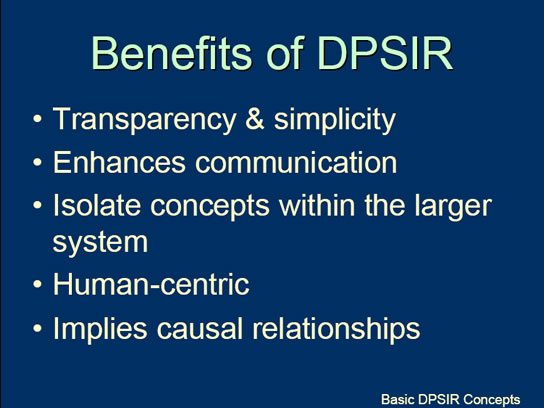Tutorials on Systems Thinking
Benefits of DPSIR

8 / 19
The DPSIR framework has several features which have contributed to its wide use:
- Transparency and simplicity, with five concepts that are readily obvious to both scientists and stakeholders.
- Enhances communication between scientists and stakeholders by simplifying the complex connections between humans and the environment
- Allows particular linkages or interactions to be isolated while retaining conceptual relevance to the larger system
- Inherently human-centric, it is appealing to the public and decision-makers.
- Appealing to policy actors because it links political objectives to environmental problems and implies causal relationships among factors (Smeets and Weterings, 1999; Giupponi, 2007)
- The elements of DPSIR can be mapped onto other frameworks, including those of the Millennium Ecosystem Assessment (Hassan et al. 2005) and Long Term Ecological Research Program
In some applications of DPSIR, Drivers or Pressures are considered to include natural physical drivers, such as climate change or hurricane events. However, because there is value in the human-centric nature of DPSIR, we focus Drivers and Pressures as specifically human-derived and instead include natural processes within State. This is helpful when identifying where to target Responses, such that they can be specifically linked to socio-economic sectors or human activities.
The DPSIR framework does not capture every situation perfectly, but is a reasonable means to organize the many social, economic and ecological interactions.
